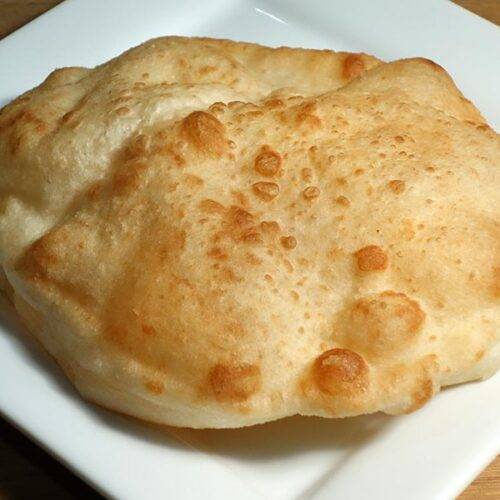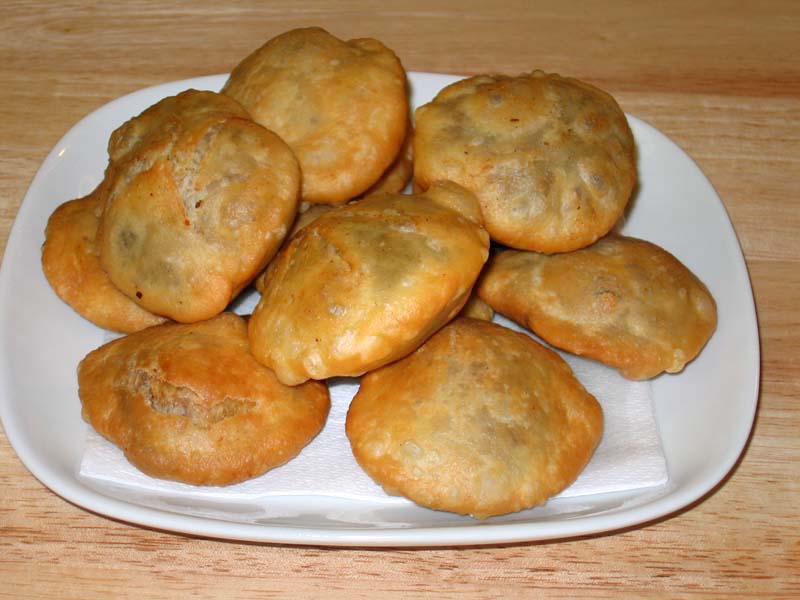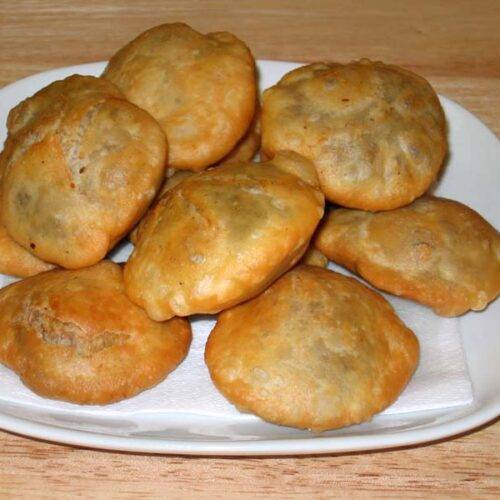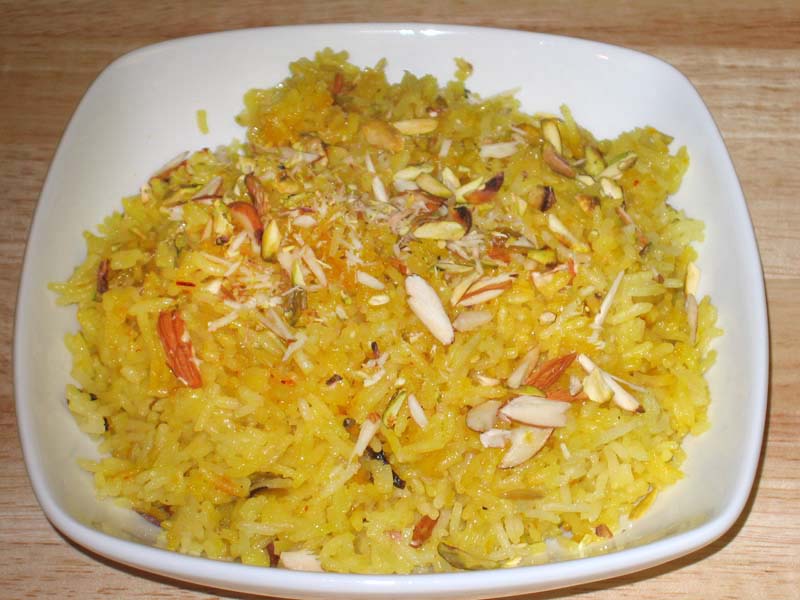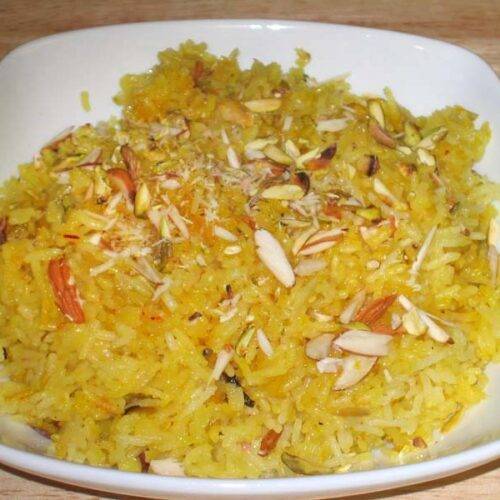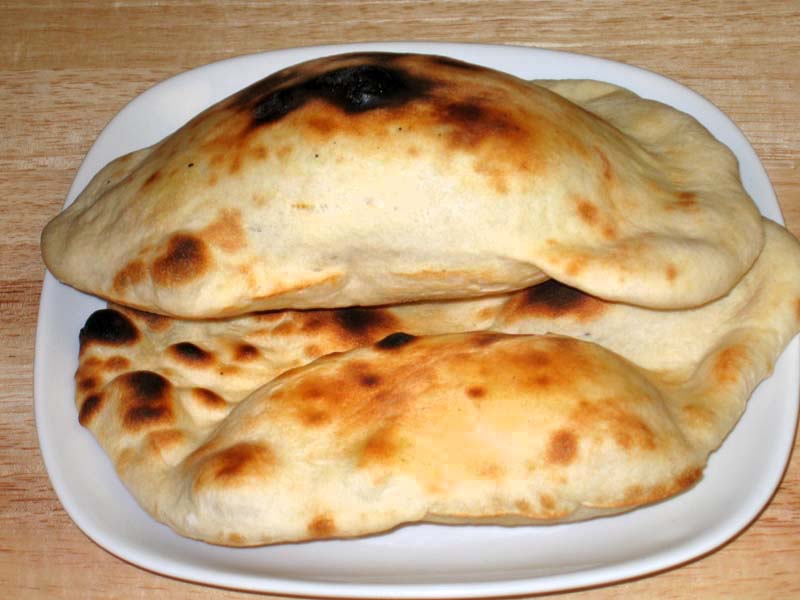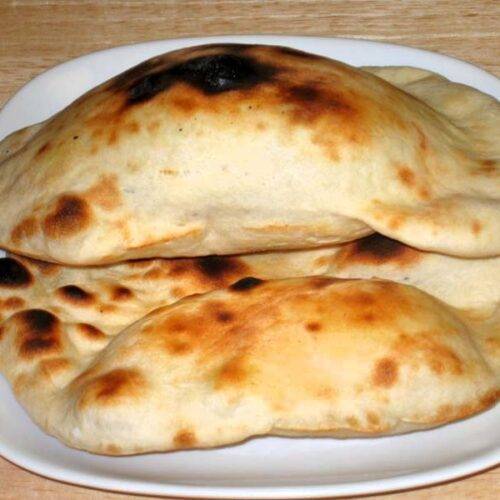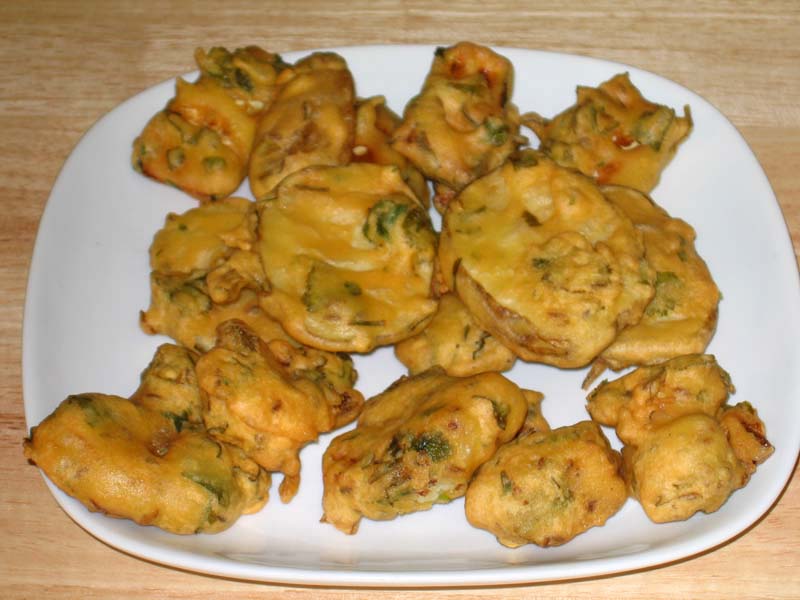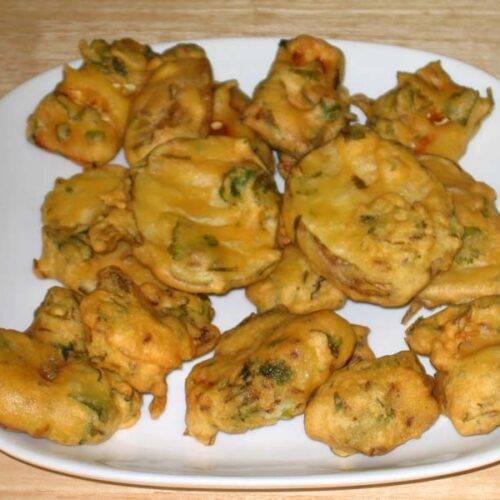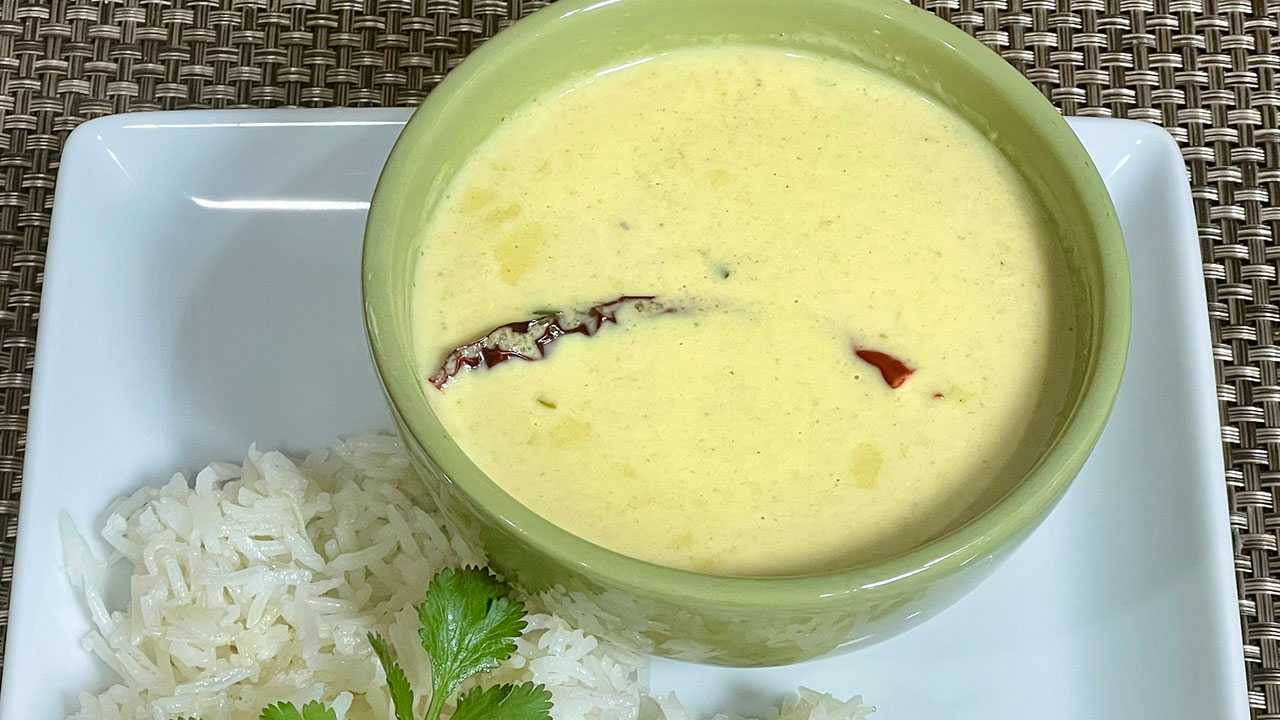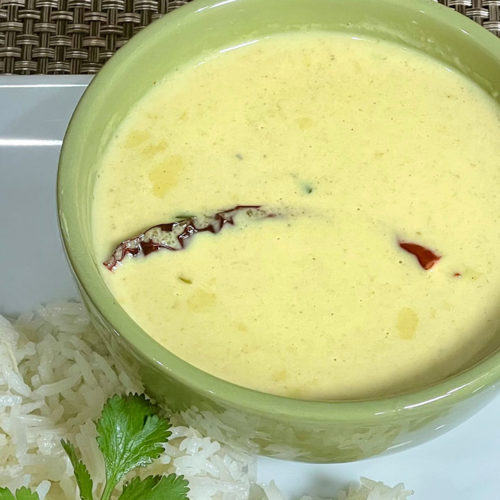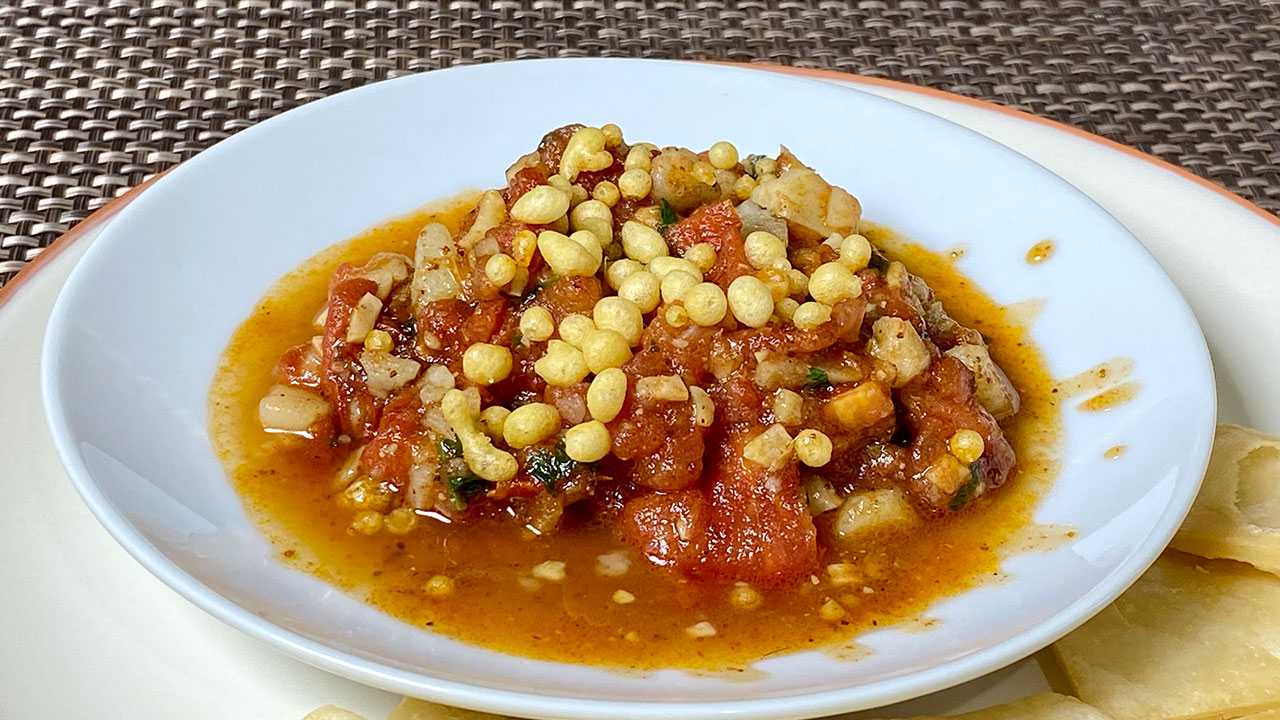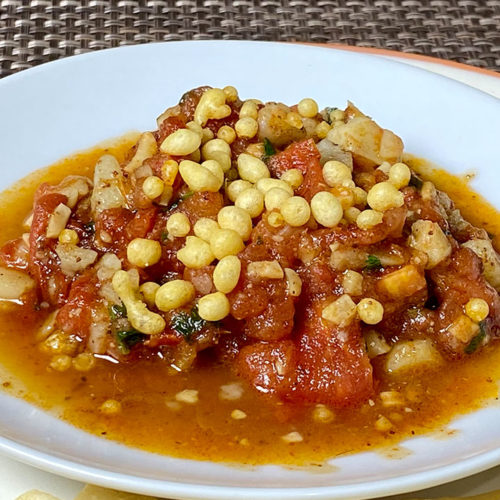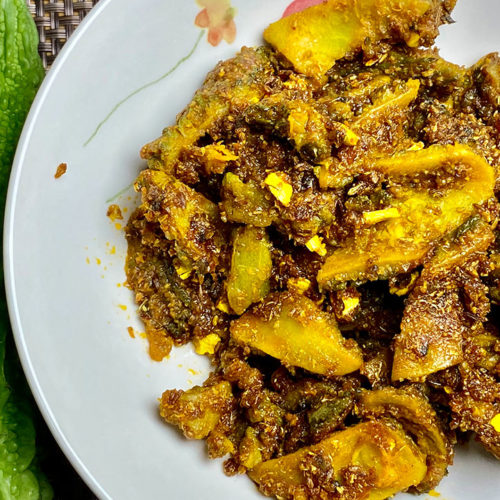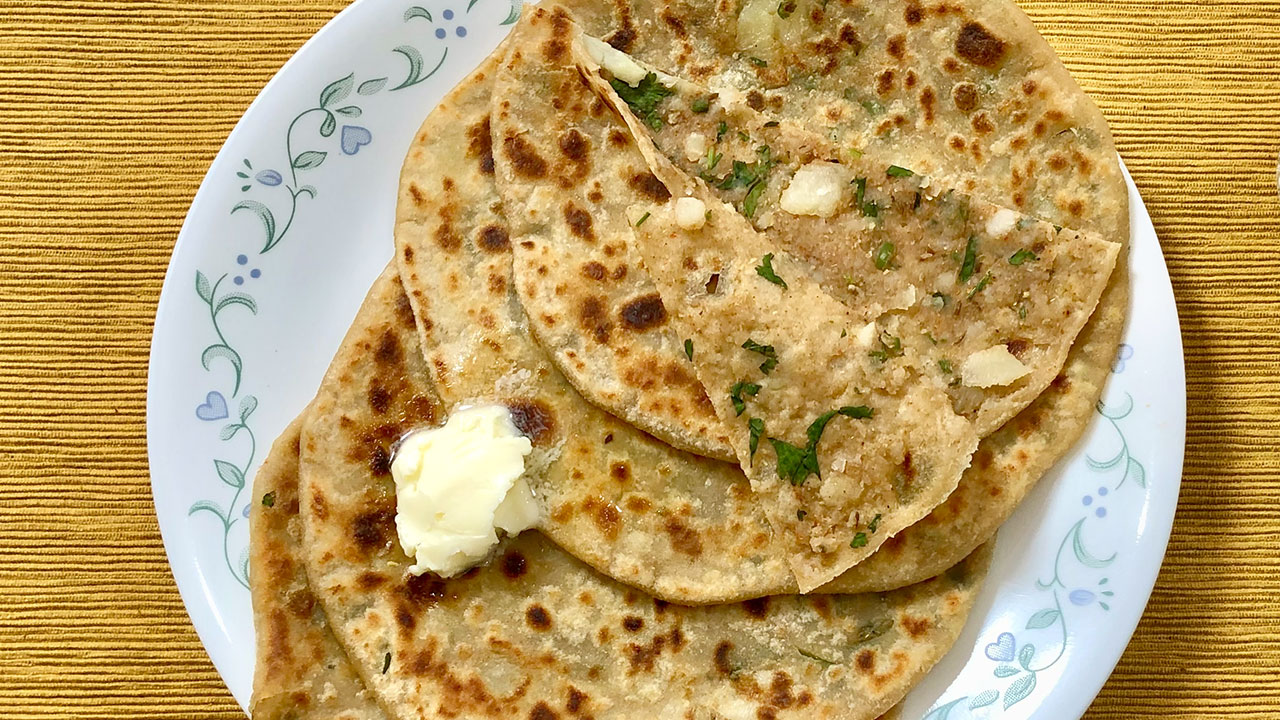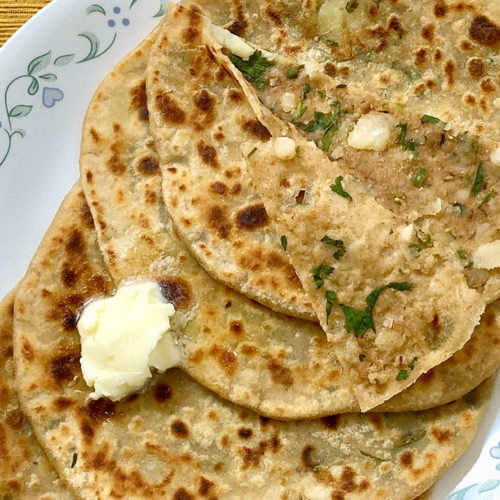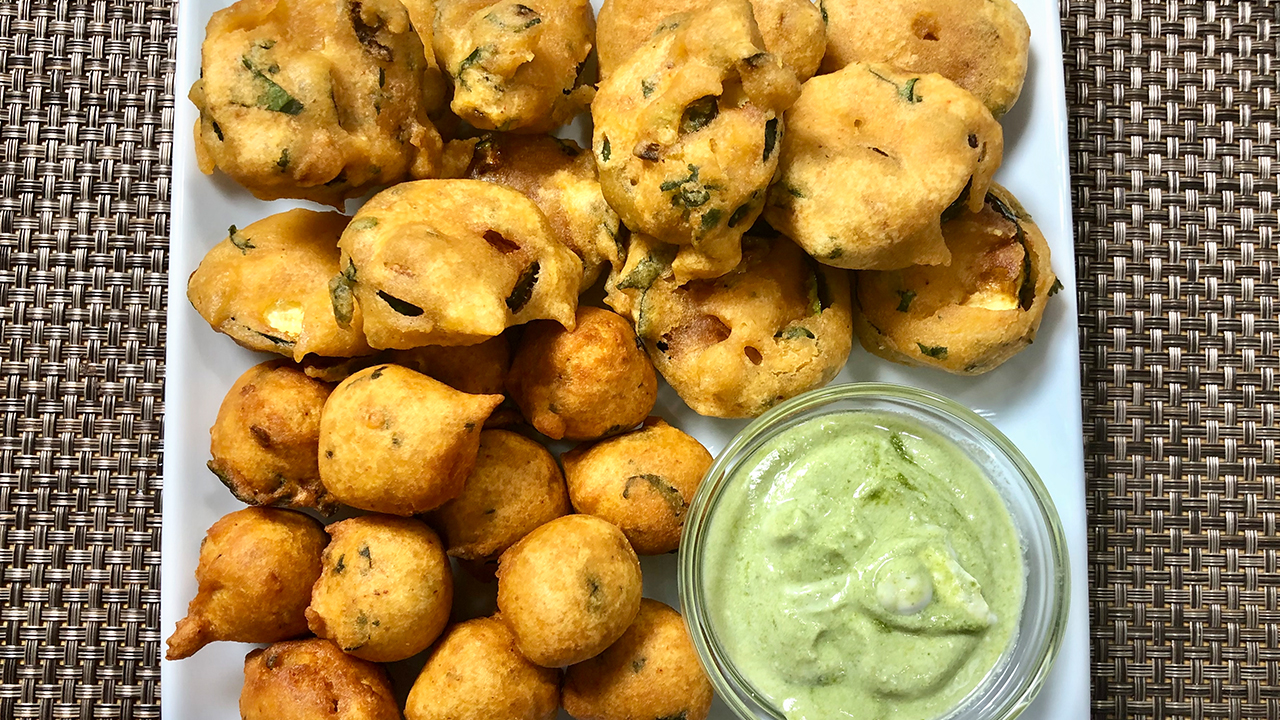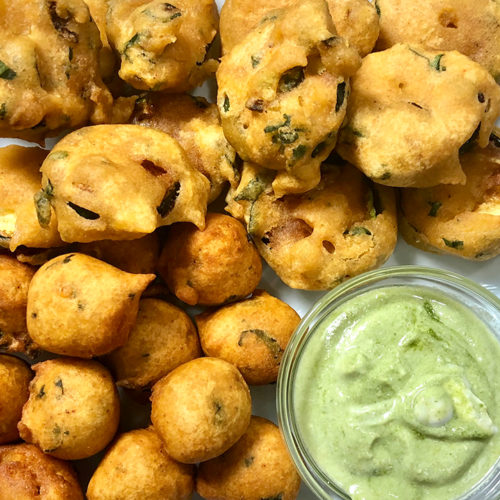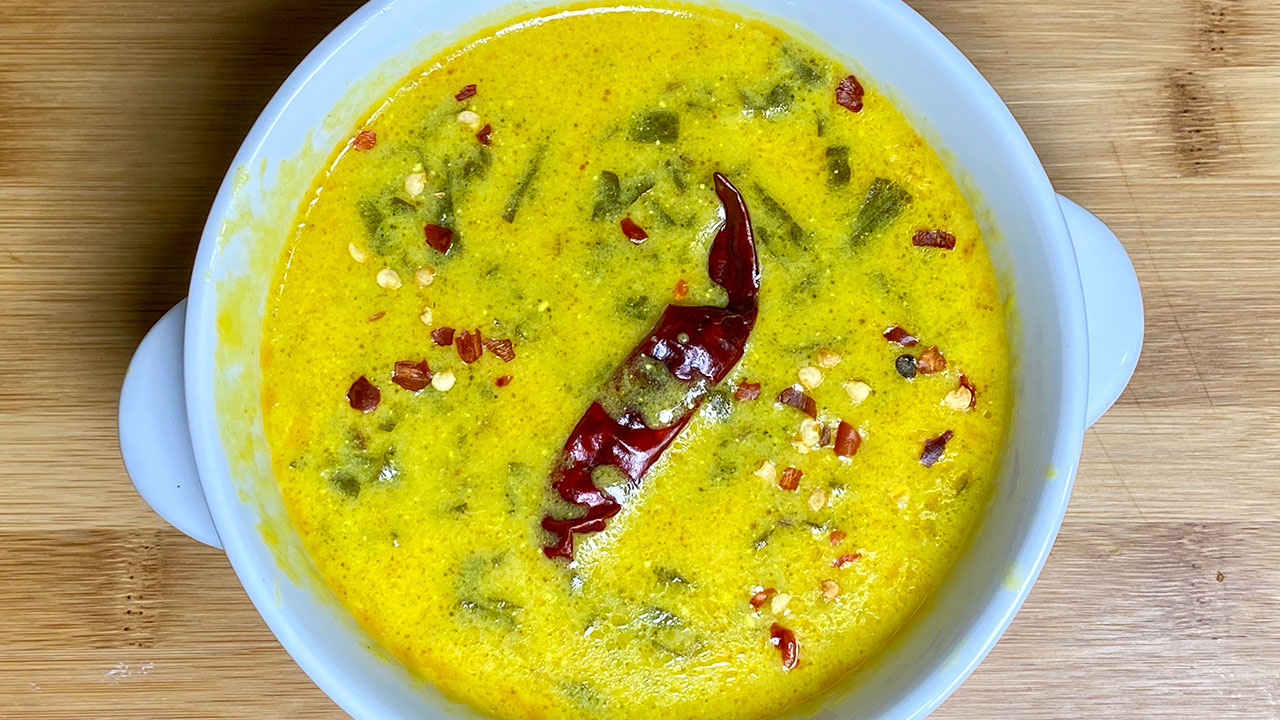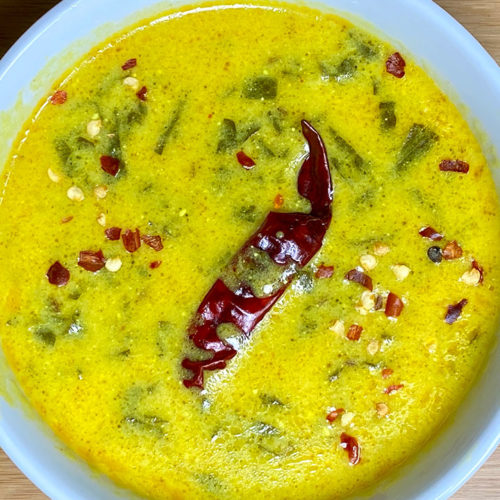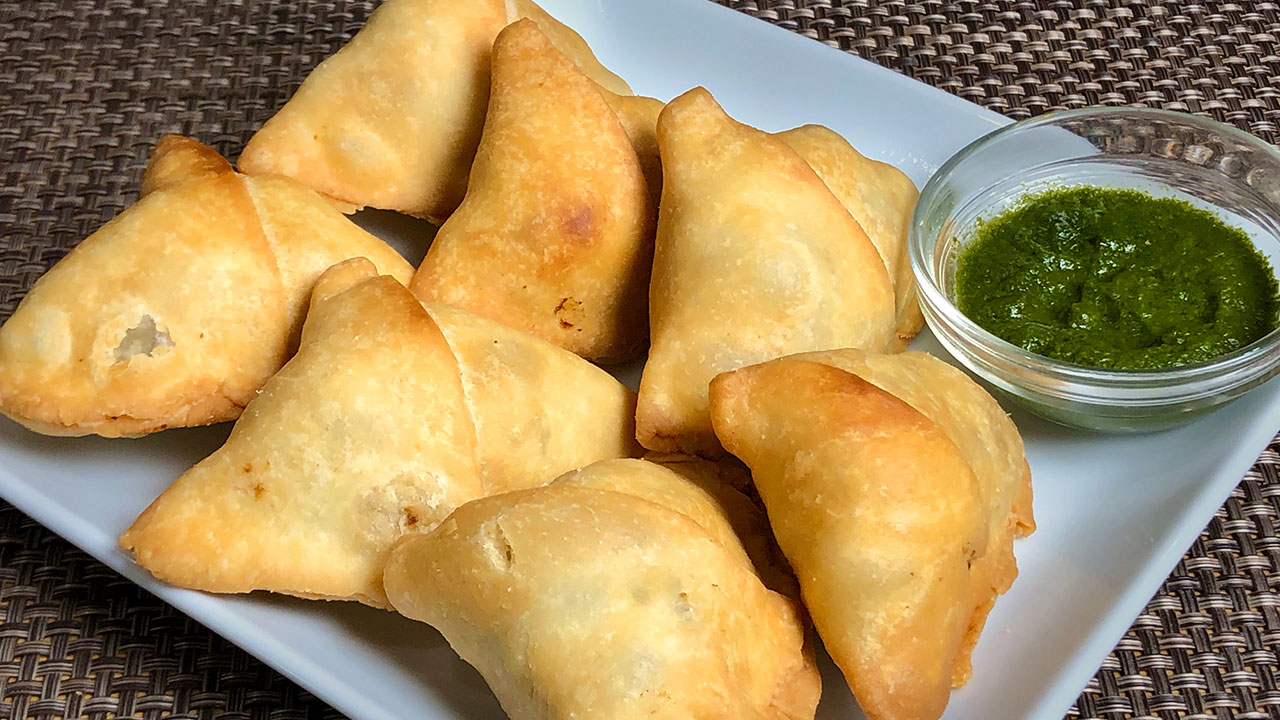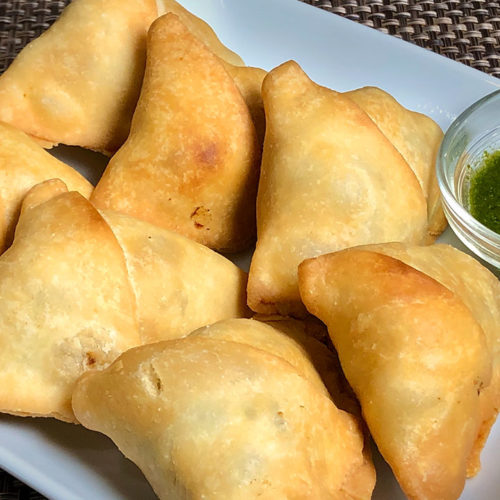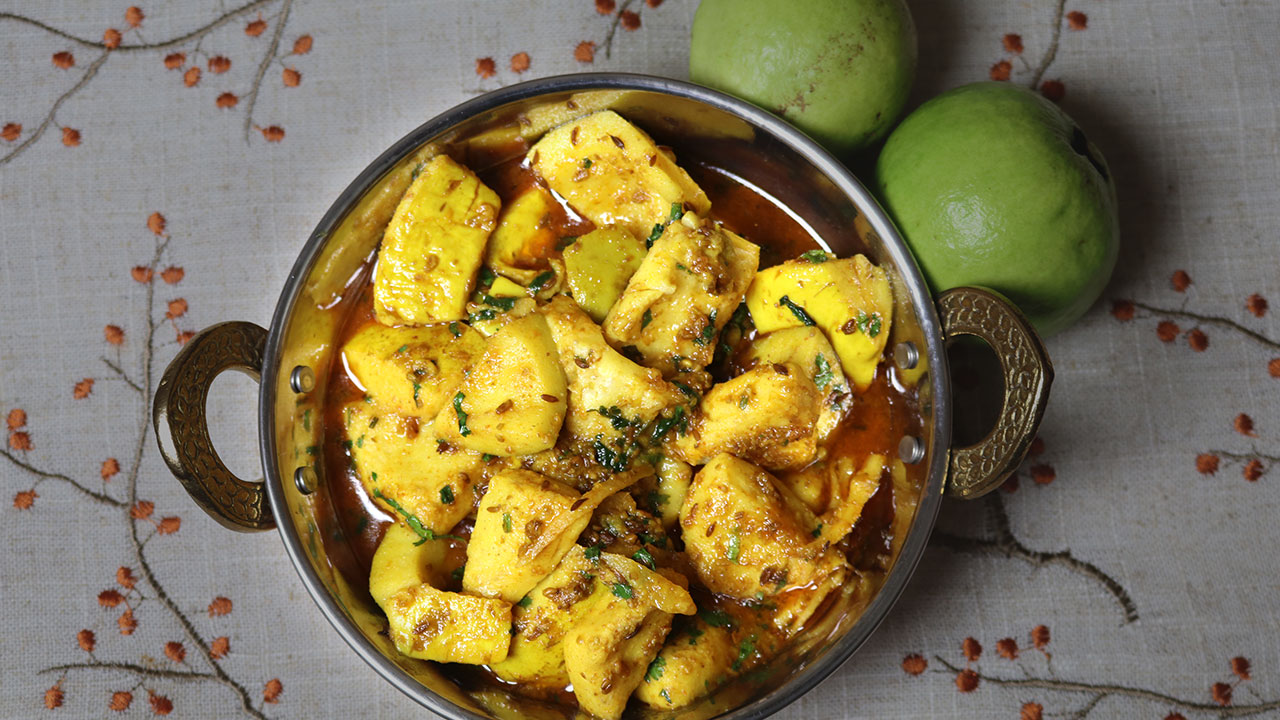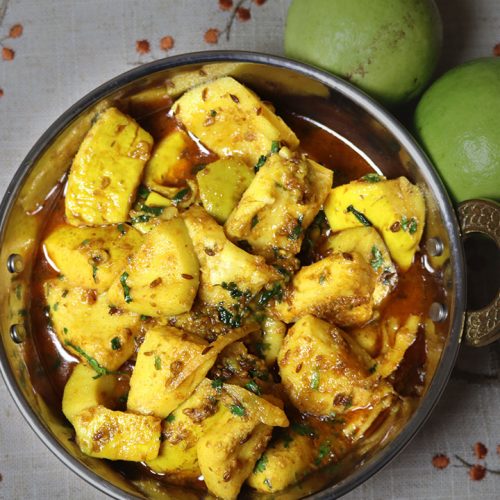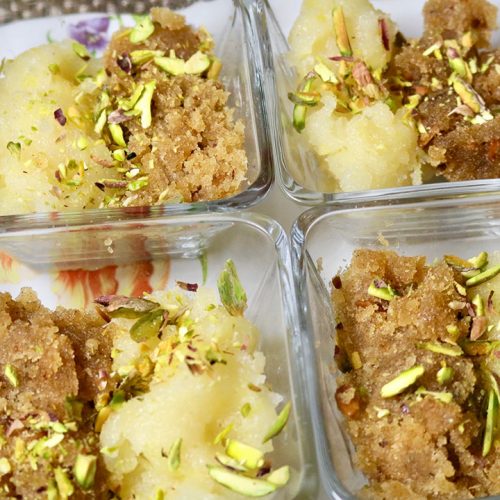Battura-(Chola Battura)
Ingredients
- 2 cups all-purpose flour plain flour or maida
- 2 tbsp sooji semolina flour
- 2 tbsp yeast
- 1 tsp sugar
- 1 tsp salt
- 3 tbsp yogurt dahai, curd
- 2 tbsp oil
- 3/4 cup lukewarm water , use as needed
Also need
- 1/4 cup flour for rolling
- oil to fry
Instructions
- Dissolve yeast in lukewarm water. Let it sit ten minutes or until the mixture becomes frothy.
- Add sooji, sugar, and salt to the all-purpose flour and mix well. Add oil, yogurt, sugar and yeast water mix well. add water as needed to make soft pliable dough.
- Cover the dough and keep in a warm place three to four hours. The dough should nearly double in volume.
- Knead the dough and divide into 8 equal parts. Shape dough into balls and roll into six- to seven circles. Dust lightly with dry flour to help with the rolling.
- Heat about 1″ of oil in a frying pan on high heat. Batura should be fried in very hot oil. To test, place a small piece of dough in the oil. The dough should float to the top and be light in color.
- Place the one batura in the frying pan and press it with a skimmer it will puff up like a ball. Turn and cook until light creamy brown on both sides. Take the batura out and place them on paper towels to absorb the excess oil. Repeat for the remaining baturas.
Notes
Fluffy and Delicious Bhatura
Bhatura is a fluffy and soft Indian fried bread that is often enjoyed with chole (spiced chickpeas). This bhatura recipe is easy to follow and results in perfectly puffed bread that is crispy on the outside and soft on the inside. Bhatura is a popular dish in North Indian cuisine and is often served for breakfast or as a hearty meal.
The Essence of Bhatura
The essence of bhatura lies in its fluffy texture and rich flavor. Made with a combination of all-purpose flour, yogurt, and a few simple ingredients, this bread is deep-fried to golden perfection. The yogurt helps in fermentation, giving the bhatura its characteristic softness and slight tanginess. This Indian fried bread is a delightful treat that pairs wonderfully with a variety of curries and dishes.
Origin and Popularity
Bhatura, also known as bhature, is a traditional bread from North India. It is especially popular in Punjab and Delhi, where it is often served as chole bhature – a combination of bhatura and spicy chickpeas. This dish is enjoyed for its rich flavors and satisfying texture, making it a favorite among both children and adults. The popularity of bhatura has spread across India and beyond, making it a beloved dish in many households.
Why You’ll Love This Recipe
- Fluffy and Soft: The perfect texture makes this bread irresistible.
- Easy to Make: Simple ingredients and straightforward steps.
- Versatile: Can be paired with a variety of dishes.
- Perfect for Special Occasions: Ideal for breakfast, lunch, or festive meals.
Variations of Vegetable Dry Recipes
Exploring Manjula’s Kitchen reveals a treasure trove of other delicious vegetable dry recipes that you might enjoy with your fluffy bhatura. Here are some related dishes that you might find interesting:
- Rajma (Kidney Bean Curry): A hearty and comforting curry made with kidney beans, cooked in a flavorful tomato-based gravy.
- Masoor Dal: A simple and nutritious red lentil soup, seasoned with spices and perfect for a light meal.
- Bhindi Masala: Spiced okra stir-fry, a quick and tasty dish that pairs well with roti or rice.
- Matar Paneer: Peas and cottage cheese cooked in a tomato-based gravy, a classic North Indian dish.
- Aloo Tikki: Spiced potato patties that are crispy on the outside and soft on the inside, perfect as a snack or appetiser. Recipe:
Serving Suggestions
Bhatura can be enjoyed in various ways:
- With Chole: The classic combination of bhature and spicy chickpeas.
- With Curries: Pair with rich and flavorful curries like paneer butter masala or dal makhani.
- As a Snack: Enjoy with a cup of chai and some pickles.
- With Raita: Serve with a side of cool yogurt raita to balance the richness.
Tips and Tricks
To perfect your bhatura recipe, consider these helpful tips:
- Use Fresh Ingredients: Fresh flour and yogurt will enhance the flavor and texture.
- Knead Well: Knead the dough until it is smooth and elastic.
- Rest the Dough: Let the dough rest for a few hours to help with fermentation.
- Fry at the Right Temperature: Ensure the oil is hot enough to puff up the bhatura without burning.
FAQs
Can I Use Whole Wheat Flour Instead of All-Purpose Flour?
Yes, you can use whole wheat flour for a healthier version, but the texture will be slightly different.
How Long Should I Let the Dough Rest?
Let the dough rest for at least 2-3 hours for better fermentation.
Can I Bake Bhatura Instead of Frying?
Traditional bhatura is fried, but you can try baking them for a healthier option. However, they won’t have the same texture.
How Do I Store Leftover Bhatura?
Store leftover bhatura in an airtight container at room temperature for up to 1 day. Reheat in a preheated oven or on a skillet before serving.
What Can I Serve with Bhatura?
Bhatura pairs well with various curries, pickles, and raita. It is traditionally served with chole, but you can get creative with different accompaniments.


